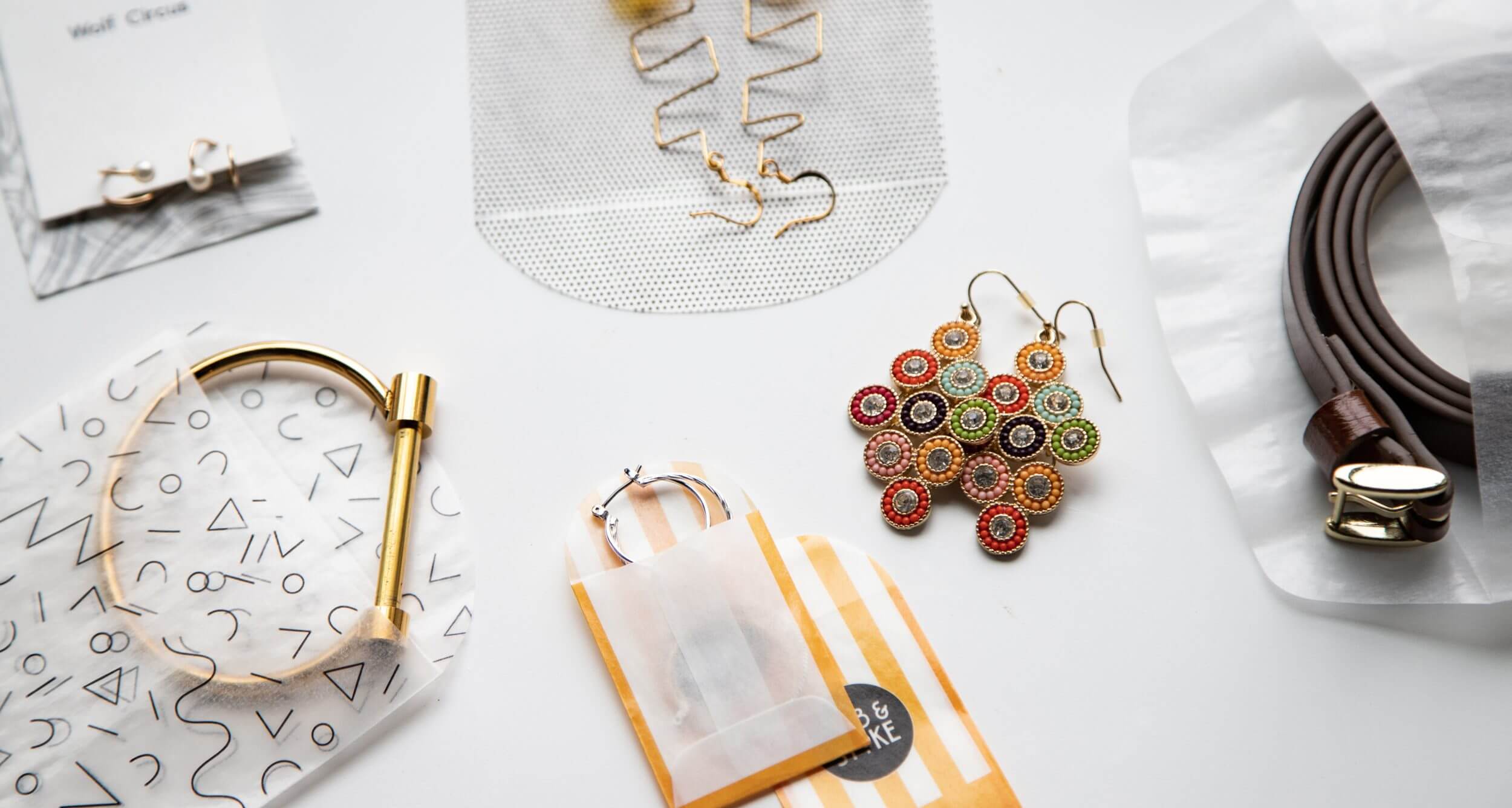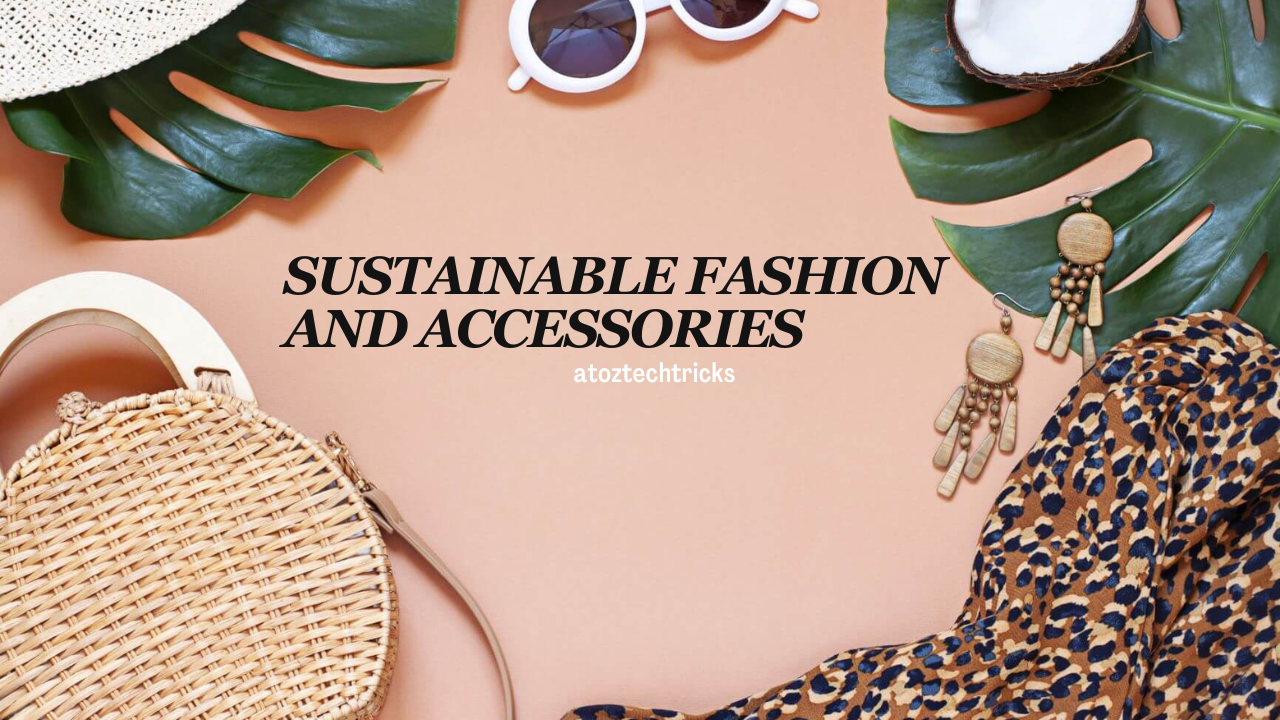Sustainable Fashion and Accessories: A Guide to Conscious Consumerism
In an era where environmental consciousness is becoming a significant part of everyday life, the fashion industry is undergoing a transformative shift toward sustainability. Sustainable fashion and accessories are no longer niche markets but growing movements that seek to redefine the way we produce, consume, and dispose of clothing and accessories. This guide explores the various aspects of sustainable fashion, its importance, and how consumers can contribute to a more ethical and eco-friendly fashion industry.
Understanding Sustainable Fashion
Sustainable fashion refers to the design, production, and consumption of clothing and accessories in ways that respect the environment, minimize waste, and promote ethical labour practices. Unlike fast fashion, which thrives on rapid production cycles, unsustainable materials, and disposable trends, sustainable fashion prioritizes longevity, quality, and ethical considerations.
Key Principles of Sustainable Fashion
- Eco-Friendly Materials: Sustainable fashion often uses organic, recycled, or biodegradable materials. Organic cotton, hemp, bamboo, and recycled polyester are common choices. These materials reduce the environmental impact of fashion by lowering water usage, reducing carbon emissions, and minimizing chemical pollutants.
- Ethical Labor Practices: Fair wages, safe working conditions, and the prohibition of child labour are central to sustainable fashion. Brands that embrace these principles ensure that their workers are treated with dignity and respect.
- Slow Fashion: Slow fashion encourages the production of high-quality, timeless pieces that can be worn for years. This contrasts with fast fashion, where items are designed for short-term use and quick disposal.
- Waste Reduction: Sustainable fashion aims to minimize waste at every stage of the production process. This includes using efficient cutting techniques, recycling fabric scraps, and creating garments that are easy to repair or repurpose.
- Transparency and Traceability: Sustainable brands are often transparent about their supply chains, allowing consumers to trace the origins of their products. This transparency builds trust and encourages accountability within the industry.

The Environmental Impact of Fast Fashion
The rise of fast fashion has had severe environmental consequences. The demand for cheap, trendy clothing has led to overproduction, excessive waste, and significant pollution. Understanding these impacts is crucial for appreciating the importance of sustainable fashion.
Water Usage
The fashion industry is one of the largest consumers of water globally. Producing a single cotton T-shirt can require up to 2,700 litres of water, equivalent to the amount a person drinks in two and a half years. The overuse of water in cotton farming, coupled with pollution from dyeing processes, has led to the depletion and contamination of water sources, particularly in regions where water is already scarce.
Textile Waste
Fast fashion’s rapid production cycles result in large quantities of unsold and discarded clothing. In the United States alone, an estimated 11 million tons of textile waste end up in landfills each year. Many of these garments are made from synthetic fibres, which can take hundreds of years to decompose, releasing harmful chemicals into the soil and waterways.
Carbon Emissions
The fashion industry is responsible for approximately 10% of global carbon emissions, more than international flights and maritime shipping combined. The energy-intensive processes involved in fabric production, transportation, and retail contribute to this high carbon footprint.
Chemical Pollution
The use of toxic chemicals in dyeing, bleaching, and finishing fabrics poses significant environmental and health risks. These chemicals often end up in water bodies, affecting aquatic life and contaminating drinking water supplies. Sustainable fashion seeks to reduce or eliminate the use of harmful chemicals through eco-friendly dyes and processes.
The Rise of Sustainable Fashion Brands
As awareness of the environmental and ethical issues in fashion grows, more brands are embracing sustainability. These companies are redefining the industry by prioritizing eco-friendly materials, ethical production practices, and transparency.
Notable Sustainable Fashion Brands
- Patagonia: Known for its commitment to environmental sustainability, Patagonia uses recycled materials, organic cotton, and fair trade practices. The brand also encourages customers to repair and recycle their products, reducing waste and promoting a circular economy.
- Stella McCartney: A pioneer in sustainable luxury fashion, Stella McCartney uses cruelty-free materials, such as vegetarian leather and recycled fabrics. The brand is also transparent about its supply chain and actively works to reduce its carbon footprint.
- Everlane: Everlane focuses on radical transparency, providing detailed information about the factories where its products are made and the true cost of production. The brand uses sustainable materials and practices to create high-quality, timeless pieces.
- Reformation: Reformation combines style with sustainability by using eco-friendly fabrics, recycling water, and minimizing waste in production. The brand also offsets its carbon emissions and offers a wide range of stylish, sustainable clothing options.
- Veja: Veja is a sustainable footwear brand that uses organic cotton, wild rubber from the Amazon, and recycled materials. The brand is committed to fair trade practices and environmental preservation.
The Role of Technology in Sustainable Fashion
Technology plays a crucial role in advancing sustainable fashion. Innovations in fabric production, digital platforms, and supply chain management are helping brands reduce their environmental impact and promote ethical practices.
Sustainable Fabrics
Technological advancements have led to the development of innovative sustainable fabrics. For example, Piñatex is a leather alternative made from pineapple leaves, a byproduct of the pineapple industry. Tencel is a biodegradable fibre made from sustainably sourced wood pulp, known for its softness and low environmental impact. These fabrics offer eco-friendly alternatives to traditional materials, reducing the industry’s reliance on animal products and synthetic fibres.
3D Printing and On-Demand Production
3D printing is revolutionizing the fashion industry by enabling on-demand production. This technology allows brands to produce garments and accessories only when there is demand, reducing waste and minimizing overproduction. Additionally, 3D printing can create complex designs with minimal material waste, further contributing to sustainability.
Blockchain for Transparency
Blockchain technology is being used to enhance transparency in the fashion supply chain. By recording every step of the production process on a blockchain, brands can provide consumers with detailed information about the origins of their products. This transparency fosters trust and ensures that sustainable and ethical practices are followed throughout the supply chain.
The Importance of Sustainable Accessories
Accessories are an integral part of fashion, and like clothing, they have a significant environmental impact. Sustainable accessories are made using eco-friendly materials and ethical practices, offering consumers a way to complete their outfits without compromising their values.
Eco-Friendly Materials in Accessories
Sustainable accessories often utilize materials that are recycled, biodegradable, or sustainably sourced. Some common eco-friendly materials include:
- Recycled Metals: Jewelry made from recycled metals, such as gold and silver, reduces the demand for mining, which is often associated with environmental degradation and unethical labour practices.
- Vegan Leather: Vegan leather alternatives, such as those made from mushrooms (Mylo) or apples, provide a cruelty-free and sustainable option for bags, shoes, and belts.
- Upcycled Materials: Upcycling involves repurposing old or discarded materials into new accessories. For example, discarded plastic bottles can be transformed into stylish handbags, while old tyres can be used to create durable belts.
Ethical Production of Accessories
Sustainable accessories are not only about materials but also about the production process. Ethical production practices ensure that workers are treated fairly, paid living wages, and work in safe conditions. Brands that prioritize ethical production often work with artisans and small communities, preserving traditional crafts and providing economic opportunities.
Popular Sustainable Accessory Brands
- Matt & Nat: Specializing in vegan bags and accessories, Matt & Nat uses materials like recycled nylon, cork, and rubber. The brand is committed to ethical production and transparency.
- Raven + Lily: Raven + Lily offers a range of sustainable accessories made by women artisans from around the world. The brand focuses on fair trade, eco-friendly materials, and empowering women through economic opportunities.
- Pela Case: Pela Case produces biodegradable phone cases made from plant-based materials. The brand is dedicated to reducing plastic waste and promoting sustainability in tech accessories.
- Nisolo: Nisolo creates ethical footwear and accessories using sustainably sourced leather and ethical production practices. The brand ensures fair wages and safe working conditions for its workers.
- Baggu: Baggu offers reusable bags and accessories made from recycled materials. The brand’s minimalist designs and commitment to sustainability have made it a popular choice for eco-conscious consumers.
Sustainability-Focused Business Ideas: Innovating for a Greener Future
How Consumers Can Support Sustainable Fashion
Consumers play a vital role in driving the sustainable fashion movement. By making conscious choices and supporting ethical brands, individuals can help reduce the environmental impact of fashion and promote more sustainable practices within the industry.
Tips for Sustainable Shopping
- Choose Quality Over Quantity: Invest in high-quality pieces that are designed to last. Avoid the temptation of fast fashion trends and instead focus on building a wardrobe of timeless, durable items.
- Research Brands: Before purchasing, research brands to ensure they align with your values. Look for transparency in their supply chains, ethical labour practices, and the use of sustainable materials.
- Shop Secondhand: Thrifting and buying secondhand clothing and accessories is an excellent way to reduce waste and give new life to pre-loved items. Many online platforms make it easy to find secondhand fashion.
- Support Local Artisans: Purchasing from local artisans and small businesses often means supporting sustainable and ethical production practices. Many artisans use traditional methods and locally sourced materials, reducing the environmental impact of their products.
- Care for Your Clothes: Properly caring for your clothes extends their lifespan. Follow care instructions, mend items when needed, and store them correctly to avoid damage. Consider learning basic sewing skills to repair and alter your garments.
- Participate in Clothing Swaps: Clothing swaps are a fun and sustainable way to refresh your wardrobe without buying new items. Gather friends or join community events to exchange clothes and accessories.
- Recycle and Donate: When you no longer need an item, consider recycling it or donating it to charity. Many brands offer take-back programs where you can return old clothing for recycling.
Eco-Friendly Product Development: A Sustainable Path to Innovation
The Future of Sustainable Fashion
The future of sustainable fashion looks promising as more brands, consumers, and governments recognize the need for change. The continued development of eco-friendly materials, innovative production methods, and increased awareness will drive the industry toward greater sustainability.
Circular Fashion Economy
The concept of a circular fashion economy is gaining traction. This model aims to keep clothing and accessories in use for as long as possible through recycling, upcycling, and repair. Instead of the traditional linear model of “take, make, dispose,” a circular economy promotes the reuse and regeneration of materials, reducing waste and conserving resources.
Sustainable Fashion Legislation
Governments and organizations are beginning to introduce legislation and initiatives to promote sustainability in fashion. For example, the European Union has proposed regulations that would require fashion brands to disclose the environmental impact of their products and encourage the use of sustainable materials. Such policies could drive significant change in the industry, pushing brands to adopt more sustainable practices.
Consumer Education and Awareness
Education and awareness are key to the growth of sustainable fashion. As consumers become more informed about the environmental and ethical implications of their choices, they are more likely to support sustainable brands and demand change from the industry. Social media, documentaries, and campaigns play a vital role in spreading awareness and encouraging conscious consumerism.

Sustainable fashion and accessories represent a growing movement toward a more ethical, eco-friendly, and responsible fashion industry. By understanding the principles of sustainability, supporting ethical brands, and making conscious choices, consumers can contribute to a positive change in the industry. The shift toward sustainable fashion is not just a trend but a necessary evolution that will shape the future of fashion for generations to come. As the industry continues to innovate and embrace sustainability, the possibilities for creating a more sustainable and stylish world are endless.




Post Comment